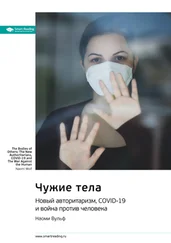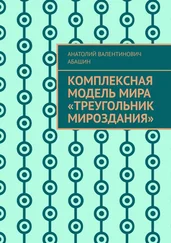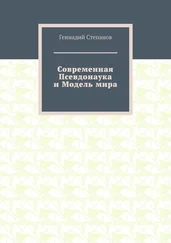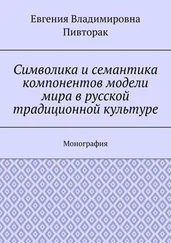142. Murray, D. R. & Schaller, M., Threat(s) and conformity deconstructed: Perceived threat of infectious disease and its implications for conformist attitudes and behavior. Eur. J. Soc. Psychol. 42, 180–188 (2012).
143. Murray, D. R., Schaller, M. & Suedfeld, P., Pathogens and politics: further evidence that parasite prevalence predicts authoritarianism. PloS One 8, e62275 (2013).
144. Murray, D. R., Trudeau, R. & Schaller, M., On the origins of cultural differences in conformity: four tests of the pathogen prevalence hypothesis. Pers. Soc. Psychol. Bull. 37, 318–329 (2011).
145. Navarrete, C. D., Fessler, D. M. T. & Eng, S. J., Elevated ethnocentrism in the first trimester of pregnancy. Evol. Hum. Behav. 28, 60–65 (2007).
146. Schaller, M. & Murray, D. R., Pathogens, personality, and culture: disease prevalence predicts worldwide variability in sociosexuality, extraversion, and openness to experience. J. Pers. Soc. Psychol. 95, 212–221 (2008).
147. Schaller, M. & Neuberg, S. L., Chapter one – Danger, Disease, and the Nature of Prejudice(s). in Advances in Experimental Social Psychology (eds. Olson, J. M. & Zanna, M. P.) 46, 1–54 (Academic Press, 2012).
148. Schaller, M., Miller, G. E., Gervais, W. M., Yager, S. & Chen, E., Mere visual perception of other people’s disease symptoms facilitates a more aggressive immune response. Psychol. Sci. 21, 649–652 (2010).
149. Schaller, M., Murray, D. R. & Bangerter, A., Implications of the behavioural immune system for social behaviour and human health in the modern world. Philos. Trans. R. Soc. B Biol. Sci. 370, (2015).
150. Stevenson, R. J. et al., Disgust elevates core body temperature and up-regulates certain oral immune markers. Brain. Behav. Immun. 26, 1160–1168 (2012).
151. Stevenson, R. J., Hodgson, D., Oaten, M. J., Barouei, J. & Case, T. I., The effect of disgust on oral immune function. Psychophysiology 48, 900–907 (2011).
152. Terrizzi, J. A., Shook, N. J. & McDaniel, M. A., The behavioral immune system and social conservatism: a meta-analysis. Evol. Hum. Behav. 34, 99–108 (2013).
153. Tybur, J. M., Bryan, A. D., Magnan, R. E. & Hooper, A. E. C., Smells like safe sex: olfactory pathogen primes increase intentions to use condoms. Psychol. Sci. 22, 478–480 (2011).
154. Van Leeuwen, F., Park, J. H., Koenig, B. L. & Graham, J., Regional variation in pathogen prevalence predicts endorsement of group-focused moral concerns. Evol. Hum. Behav. 33, 429–437 (2012).
155. Wu, B.-P. & Chang, L., The social impact of pathogen threat: How disease salience influences conformity. Personal. Individ. Differ. 53, 50–54 (2012).
Перехитрить поведенческую иммунную систему
156. De Barra, M., Islam, M. S. & Curtis, V., Disgust sensitivity is not associated with health in a rural Bangladeshi sample. PloS One 9, e100444 (2014).
157. Huang, J. Y., Sedlovskaya, A., Ackerman, J. M. & Bargh, J. A., Immunizing against prejudice: effects of disease protection on attitudes toward outgroups. Psychol. Sci. 22, 1550–1556 (2011).
158. Lee, S. W. S. & Schwarz, N., Dirty hands and dirty mouths: embodiment of the moral-purity metaphor is specific to the motor modality involved in moral transgression. Psychol. Sci. 21, 1423–1425 (2010).
159. Zhong, C.-B. & Liljenquist, K., Washing away your sins: threatened morality and physical cleansing. Science 313, 1451–1452 (2006).
Измерение личности
160. Jackson, J. J., Thoemmes, F., Jonkmann, K., Lüdtke, O. & Trautwein, U., Military Training and Personality Trait Development: Does the Military Make the Man, or Does the Man Make the Military? Psychol. Sci. 23, 270–277 (2012).
161. Kajonius, P. J. & Johnson, J., Sex differences in 30 facets of the five factor model of personality in the large public (N = 320,128). Personal. Individ. Differ. 129, 126–130 (2018).
162. Schmitt, D. P. et al., Personality and gender differences in global perspective. Int. J. Psychol. J. Int. Psychol. 52 Suppl 1, 45–56 (2017).
163. Tsugawa, Y. et al., Comparison of Hospital Mortality and Readmission Rates for Medicare Patients Treated by Male vs Female Physicians. JAMA Intern. Med. 177, 206–213 (2017).
164. Vianello, M., Schnabel, K., Sriram, N. & Nosek, B., Gender differences in implicit and explicit personality traits. Personal. Individ. Differ. 55, 994–999 (2013).
Привлекающий и доминирующий
165. Dutton, D. G. & Aron, A. P., Some evidence for heightened sexual attraction under conditions of high anxiety. J. Pers. Soc. Psychol. 30, 510–517 (1974).
Ложное приписывание волнения
166. Aronson, E., Wilson, T. D. & Akert, R. M. Sozialpsychologie (Pearson Deutschland GmbH, 2008).
167. Marin, M. M., Schober, R., Gingras, B. & Leder, H., Misattribution of musical arousal increases sexual attraction towards opposite-sex faces in females. PloS One 12, e0183531 (2017).
168. Meston, C. M. & Frohlich, P. F., Love at first fright: partner salience moderates roller-coaster-induced excitation transfer. Arch. Sex. Behav. 32, 537–544 (2003).
169. Schachter, S., The Interaction of Cognitive and Physiological Determinants of Emotional State. Advances in Experimental Social Psychology (ed. Berkowitz, L.) 1, 49–80 (Academic Press, 1964).
170. White, G. L., Fishbein, S. & Rutsein, J., Passionate love and the misattribution of arousal. J. Pers. Soc. Psychol. 41, 56–62 (1981).
Тестостерон – недопонятый гормон
171. Attrill, M. J., Gresty, K. A., Hill, R. A. & Barton, R. A., Red shirt colour is associated with long-term team success in English football. J. Sports Sci. 26, 577–582 (2008).
172. Buss, D. M. & Barnes, M., Preferences in human mate selection. J. Pers. Soc. Psychol. 50, 559–570 (1986).
173. Dabbs, J. M., Carr, T. S., Frady, R. L. & Riad, J. K., Testosterone, crime, and misbehavior among 692 male prison inmates. Personal. Individ. Differ. 18, 627–633 (1995).
174. Eisenegger, C., Haushofer, J. & Fehr, E., The role of testosterone in social interaction. Trends Cogn. Sci. 15, 263–271 (2011).
175. Eisenegger, C., Naef, M., Snozzi, R., Heinrichs, M. & Fehr, E., Prejudice and truth about the effect of testosterone on human bargaining behaviour. Nature 463, 356–359 (2010).
176. Farrelly, D., Slater, R., Elliott, H. R., Walden, H. R. & Wetherell, M. A., Competitors who choose to be red have higher testosterone levels. Psychol. Sci. 24, 2122–2124 (2013).
177. Ferrucci, L. et al., Low testosterone levels and the risk of anemia in older men and women. Arch. Intern. Med. 166, 1380–1388 (2006).
178. Gottschall, J., Martin, J., Quish, H. & Rea, J., Sex differences in mate choice criteria are reflected in folktales from around the world and in historical European literature. Evol. Hum. Behav. 25, 102–112 (2004).
179. Hill, R. A. & Barton, R. A., Psychology: Red enhances human performance in contests. Nature 435, 293 (2005).
180. Honk, J. van, Montoya, E. R., Bos, P. A., Vugt, M. van & Terburg, D., New evidence on testosterone and cooperation. Nature 485, E4–E5 (2012).
181. Khan, S. A., Levine, W. J., Dobson, S. D. & Kralik, J. D., Red signals dominance in male rhesus macaques. Psychol. Sci. 22, 1001–1003 (2011).
182. Miller, S. L., Maner, J. K. & McNulty, J. K., Adaptive attunement to the sex of individuals at a competition: the ratio of opposite-to same-sex individuals correlates with changes in competitors’ testosterone levels. Evol. Hum. Behav. 33, 57–63 (2012).
183. Montoya, P., Campos, J. J. & Schandry, R., See red? Turn pale? Unveiling emotions through cardiovascular and hemodynamic changes. Span. J. Psychol. 8, 79–85 (2005).
Читать дальше
Конец ознакомительного отрывка
Купить книгу
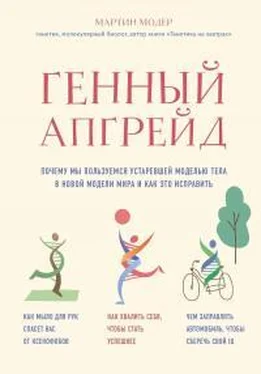



![Мартин Модер - Генетика на завтрак [Научные лайфхаки для повседневной жизни]](/books/416623/martin-moder-genetika-na-zavtrak-nauchnye-lajfhaki-thumb.webp)
